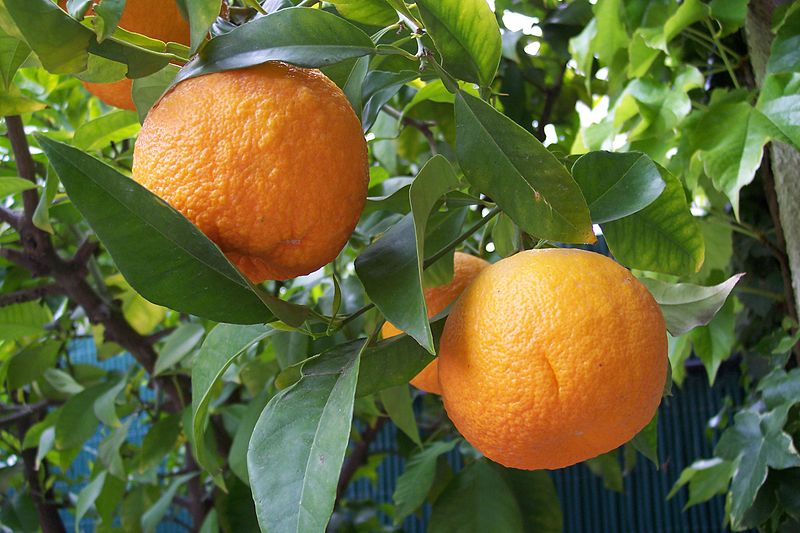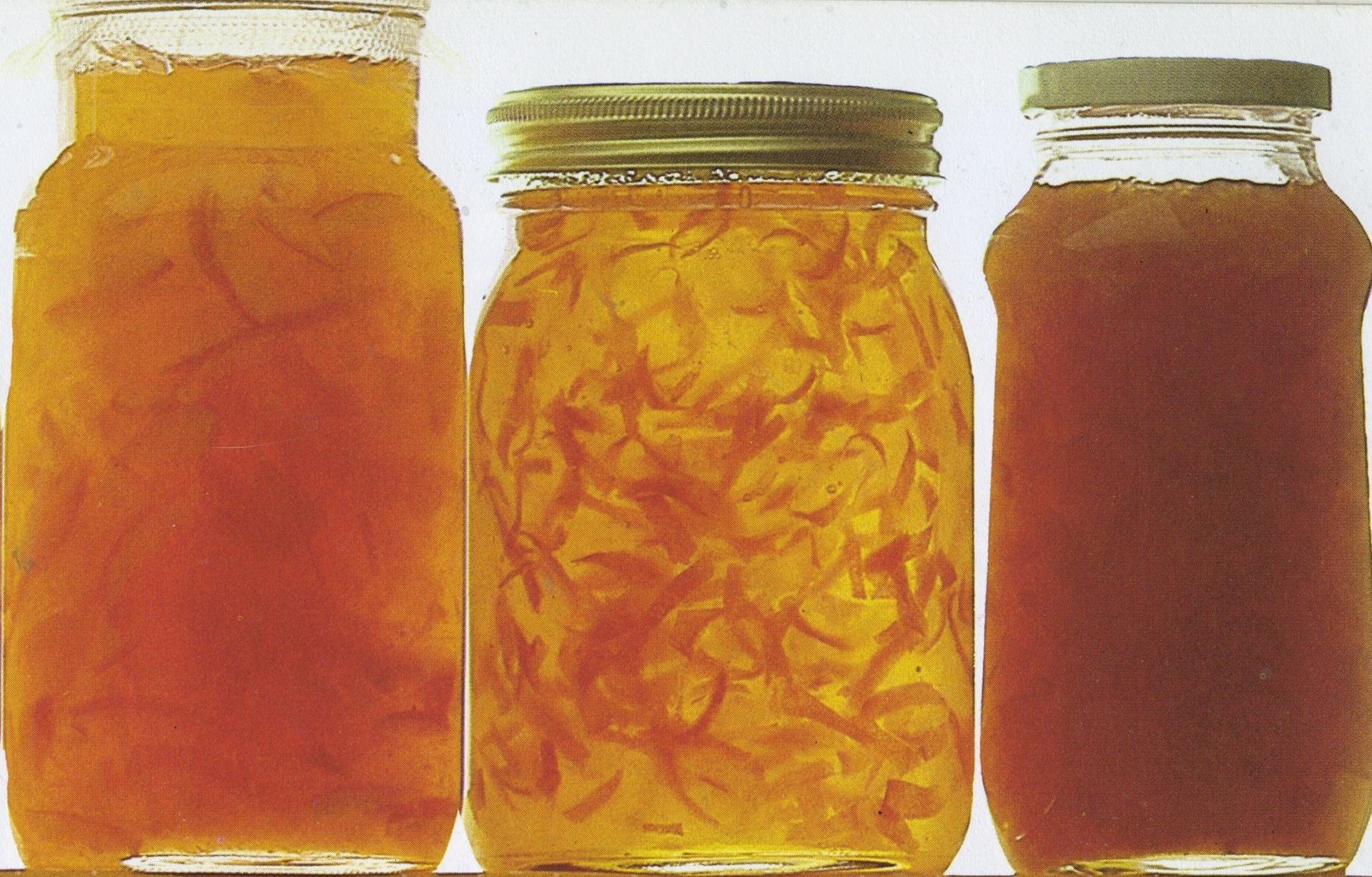In Season - Seville Oranges
It's a happy coincidence that – although now available all year round – vitamin-packed citrus fruits are in their peak season in January and February, bringing the scents and flavours of sunnier climes just when we need them most.
A high proportion of the world’s citrus production is processed, mostly as frozen concentrated juice, but there is nothing to beat the flavour and texture of fresh fruit in the peak of its season – memorable if you have ever had the pleasure of enjoying fruit straight from the tree, even an ornamental tree grown in a tub at home in Ireland. (I have lemons ripening on a potted tree at the moment, which is something to look forward to soon.)

Unlike their juicy sweet-fleshed relations, which are so delicious used fresh and for juicing, bitter oranges are used mainly in cooking, and for their essential oil, which is used for its scent and flavour. Variously known as the Seville Orange (named after a major growing area), sour orange, bigarade orange, and marmalade orange, it is the fruit of a citrus tree, Citrus × aurantium.
Bitter oranges – for marmalade and, perhaps, sauces and accompaniments including variations on the traditional orange sauce ‘bigarade,’ for serving with duck – are in season for just a few short weeks, and it is well worth getting some now even if you are busy, as they freeze down well for use later in the year. (A 3 lb/1.5 kg batch is perfect for marmalade, see below).
 Favourite Mincer Marmalade
Favourite Mincer Marmalade
This was my father’s favourite marmalade recipe and it’s the one I normally use, as it is easy and convenient, whether made with fresh or frozen oranges. Quantities given make about 9 lb/4. kg marmalade, but it is handy to double them if you have a suitable pan.
2 large lemons
3 lb/1.4 kg Seville or other bitter oranges
5 pints/3 litres water
6 lb/2.7 kg granulated sugar
Squeeze the lemons and reserve the juice. Scrub the oranges and pick the discs off the stalk ends, then put the whole oranges and lemon peel into a large, heavy-based pan and cover with 4 pints/2.3 litres of the water. Cover, bring to the boil and simmer for about 1½ hours, or until the peel is quite soft.
Lift the oranges and lemon peel out with a slotted spoon, reserving the liquid. Halve the oranges as soon as they are cool enough to handle and scoop out the flesh and pips into a smallish pan. Add the remaining l pint/600ml of water, bring to the boil and simmer for 10 minutes to extract the pectin from the pith and pips. Cut up the softened peel as coarsely or as finely as you like, or put it through a mincer. (This looks messy at the time, but works out OK; you could also use a liquidiser/food processor but you have to be very careful not to purée the peel).
Put the prepared peel back into the pan containing the cooking liquid, then add the sugar, lemon juice and the strained juice from the pith and pips mixture. Stir over low heat until dissolved (this will be quicker if the sugar has been warmed in a low oven beforehand), bring to the boil and boil fast for about 15-20 minutes until setting point is reached.
Take the pan off the heat and allow to cool for 10-15 minutes, then stir well to distribute the fruit evenly and use a small jug to pour it into clean warm jars. Small waxed discs may be put on top of the marmalade immediately, but don't cover with cellophane or lids until absolutely cold, as this reduces the chance of condensation forming and consequently the risk of mould formation during storage. Label and store in a cool, dark place.
Hints for success:
- Cooking citrus fruit takes much longer than other fruits because of the thickness of the peel, so much more water is needed to allow for evaporation. By the end of the first cooking stage, the contents of the pan should be reduced by half and the peel must be very soft - once the sugar is added, the peel will not soften any more.
- Pectin and acid content is important to obtain a good set in all jam and marmalade making; lemon juice is added to Seville orange marmalade to supply the extra acid needed to get a good set and prevent crystallisation.
- When the sugar is added it must be dissolved over low heat before bringing the temperature up to the boil. Once dissolved, a fast rolling boil is needed to bring the marmalade up to boiling point. To allow for safe fast boiling, the reduced pulp should not come more than halfway up the pan. If you don't have a big heavy-based pan suitable for preserves, why not consider sharing one with friends? Alternatively, you can hire preserving pans or big heavy-duty Castle Brand saucepans from some speciality kitchen shops.
-The longer you boil, the darker the colour and more 'mature' the flavour, but over-boiling produces a half-set, syrupy preserve. If your marmalade has reached setting point and you prefer it darker, add a spoonful or two of treacle instead of boiling longer.
- Setting point is reached when a sugar thermometer reaches 221ºF, 105ºC, or when a little jam cooled on a cold saucer wrinkles when pushed with a finger or spoon.
- To keep well, the marmalade must be poured into jars which are clean, dry and warm, then left until completely cold before covering. Store in a cool, dark place.
- Even if you don’t have time to make marmalade at the time, get the oranges as the season is very short and they freeze well - just make sure that you choose a recipe which involves cooking the oranges whole and freeze them in weighed batches. If they're likely to be in the freezer for a long time, add an extra orange or two per batch to allow for any loss of pectin during storage - or add a couple of sweet oranges or grapefruit at the time if you leave them longer than anticipated.





There are currently no comments
Leave a comment
Not a member? Register for your free membership now!
Or leave a comment by logging in with: